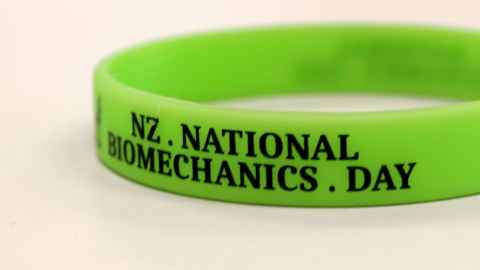Bioengineering Institute reaches out to STEM students on National Biomechanics Day
4 April 2018
Poi spinning, lung and heart simulations will be just some of the activities on display at ABI for school students on National Biomechanics Day.

Can we capture leg motion and use it to understand calf and thigh muscle contraction? Or what about seeing inside a heart to get a glimpse of how it functions? Or observing a model of lungs as they change according to the impact of so many cigarettes smoked per day?
These are just a few of the biomechanics projects that 100 secondary school students will be exposed to at the Auckland Bioengineering Institute (ABI) as part of National Biomechanics Day on 11 April.
Biomechanics is not taught in high schools, yet it is fundamental to the experiences of humans in their everyday lives.
Biomechanics is about understanding the mechanics underpinning biological systems, says ABI Senior Research Fellow Geoffrey Handsfield, who is organising ABI’s Biomechanics day and is a member of the National Biomechanics Committee.
“Biomechanics is not taught in high schools, yet it is fundamental to the experiences of humans in their everyday lives,” says Dr Handsfield. “Biomechanics incorporates many STEM disciplines, such as physics, biology, chemistry, and maths. Because it’s fun and practical, biomechanics often motivates students to become more engaged and excited about these subjects.
“We use biomechanics in everything we do, from walking to opening a door, to playing sports. It’s really fundamental to how we engage the world around us and even the history of who we are as a species. And yet, somehow, the general public is often unaware of the science of biomechanics and what it can teach you about yourself and how your body works.”
This is the second year that a National Biomechanics Day has been held in New Zealand and it is about engaging school students with the discipline.
At the ABI this year, students will rotate through demonstrations that represent the different ways that biomechanics is done at the Institute. This will include imaging, computation, instrumentation, modeling and motion capture. One activity that will be captured is poi spinning.
“Poi is practiced all over the world, and it may hold the key to staying fit even well into old age,” says Dr Handsfield “We demonstrate the art of poi spinning, explaining how it's good for your brain and body, and using hi-tech imaging technology to record the motions that students can create themselves with their poi.
Students will also see first-hand the environment where this research is done and will meet the postgraduate students and interns who do it.
For more information
Geoffrey Handsfield on 95bFM's Ready Steady Learn
National Biomechanics Day on Facebook
ABI activities on National Biomechanics Day
Motion Capture of Poi Spinning
Poi, a weight on the end of a cord which you spin in circular patterns, came from the Māori of New Zealand. Today poi is practiced all over the world, and it may hold the key to staying fit even well into old age! In this demonstration, we demonstrate the art of poi spinning, explain how it's good for your brain and body, and use hi-tech imaging technology to record the motions that students can create themselves with their poi.
Instrumentation for Biomechanics
Biomechanics is the science of how living things move and how their bodies work. In order to understand this science at a fundamental level, we often need to build our own experimental devices! From devices to precisely image the deformation of skin under pressure, to devices that inflate synthetic lungs with air, these are cutting edge prototypes to understand biomechanics. For students who love engineering and building devices, you'll be excited to see the instruments that students at the ABI have designed and built to perform new experiments.
Computation for Biomechanics
As with many sciences, biomechanics is often done using computer programming. In this demonstration, we'll have students write their own computer code that simulates the muscles that move the human jaw and allow for talking and chewing. You'll be able to control movement biomechanics with your fingertips!
Heart and Lung Simulations
One of the ways to understand biomechanics is with computational simulations that have been created from high-tech medical images and the laws of physics and physiology. Students at the ABI have created sophisticated simulations of how the heart and lungs work. In this demonstration, you'll get to interact with the heart and lungs and see how they work using simulations on a touch screen computer.
The Big Experiment
Use advanced wearable technology to record your jump height and accelerations! Compare your scores against other students around New Zealand and see how data are recorded and plotted in order to make conclusions about scientific principles.
Media queries
Tess Redgrave| Media Adviser, Auckland Bioengineering Institute
Tel: +64 9 923 7383
Mob: +64 (0) 027 562 5868
Email: t.redgrave@auckland.ac.nz
Join our ABI mailing list
Don't miss out on the latest news from the Auckland Bioengineering Institute - join our mailing list so we can keep in touch.